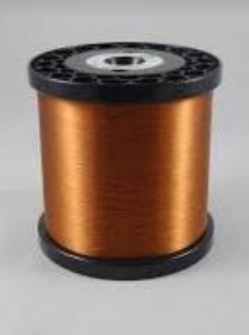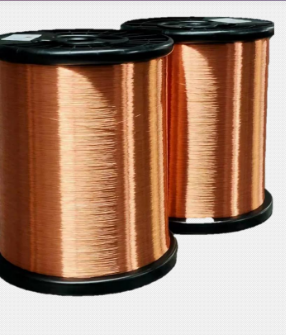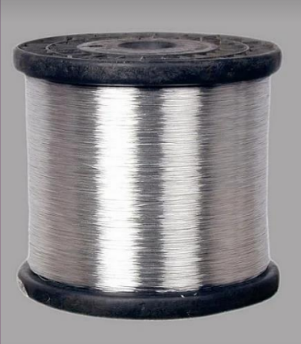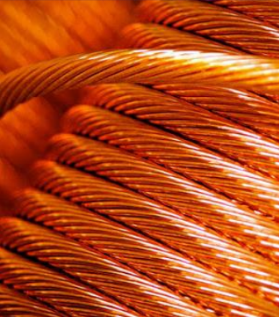Copper Wire

Bare Copper Wire
Copper is a good conductor of heat & electricity. This property makes copper most suitable for electric transmission purposes. The bare copper wire obtained at the first phase of breakdown of rod is processed further for heat treatment to increase its ductility. This process is regarded as annealing of the copper wire. Annealing occurs by the diffusion of atoms within a solid material so that the material progresses towards its equilibrium state. All the bare copper wires that we provide are carefully tested to check their diameter, elongation, conductivity & resistance. Our sources have different processes of annealing implemented inversely for different sizes ensuring superior quality of the finished product.

Annealed Copper Wire
Annealed copper wire refers to copper wire that has been heated & then slowly cooled, typically in a controlled atmosphere, to improve its flexibility & reduce its hardness. This process, known as annealing, involves heating the copper wire to a specific temperature, holding it at that temperature for a period of time, & then allowing it to cool gradually. Annealing can improve the ductility & malleability of copper wire, making it easier to bend & shape without breaking. This can be particularly important in applications such as electrical wiring, where the wire may need to be bent & manipulated during installation. Annealed copper wire is also typically less brittle & more resistant to cracking or breaking than unannealed wire. This can make it more durable and less likely to fail over time.

Tinned Copper Wire
Copper tinned wire is a type of electrical wire that is coated with a thin layer of tin. The purpose of tinning copper wire is to improve its resistance to corrosion & oxidation, as well as to make it easier to solder. Tinning the wire involves applying a small amount of molten tin to the surface of the copper wire. The tin forms a thin layer on the surface of the wire, which helps to protect it from environmental factors that can cause it to degrade over time. Copper tinned wire is commonly used in electrical & electronic applications where reliability & long-term performance are critical. It is often used in harsh environments where exposure to moisture, salt, or other corrosive materials can cause untreated copper wire to fail prematurely. The tinning process helps to extend the lifespan of the wire & ensure that it can continue to function reliably over time.

Bunched Copper
Bunched copper wire refers to a type of electrical wire that consists of multiple thin copper strands grouped or bundled together. These individual strands are typically made of high-conductivity copper & are twisted or braided to form a cohesive bundle. Bunching the strands provides flexibility & allows for better conductivity compared to a solid copper wire of the same cross-sectional area. The bundling of the copper strands in bunched wire offers several advantages. Firstly, it enhances the wire's flexibility, making it easier to handle & install in various applications. This flexibility is particularly important when dealing with tight spaces or when the wire needs to be bent or routed around corners. Additionally, bunched copper wire exhibits improved resistance to metal fatigue & stress. The individual strands distribute the electrical current more evenly, reducing the risk of hotspots & potential failures due to excessive
heat or mechanical stress. This characteristic makes bunched copper wire suitable for applications where the wire may undergo frequent bending or movement.
